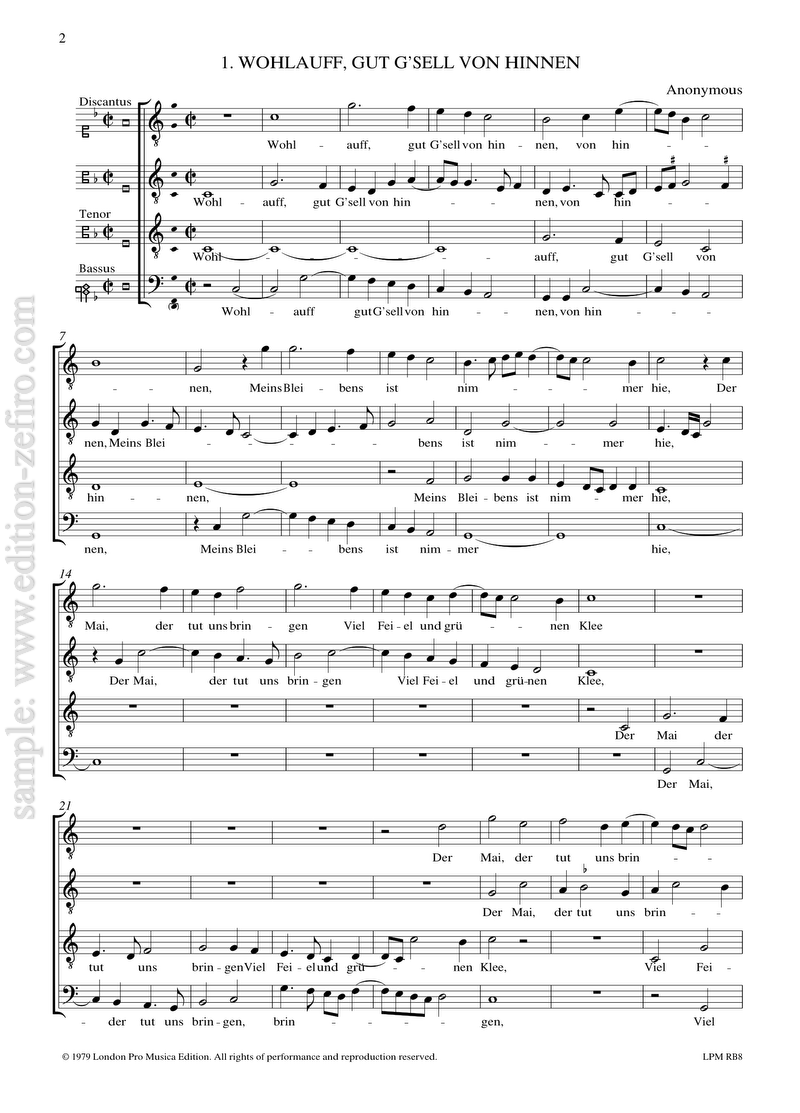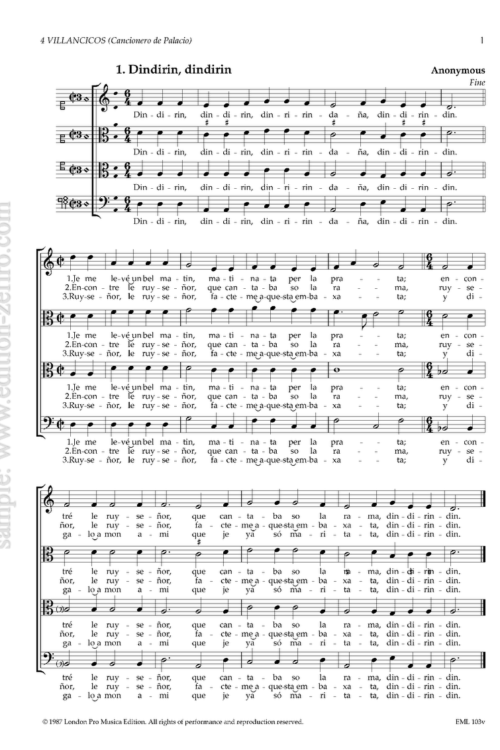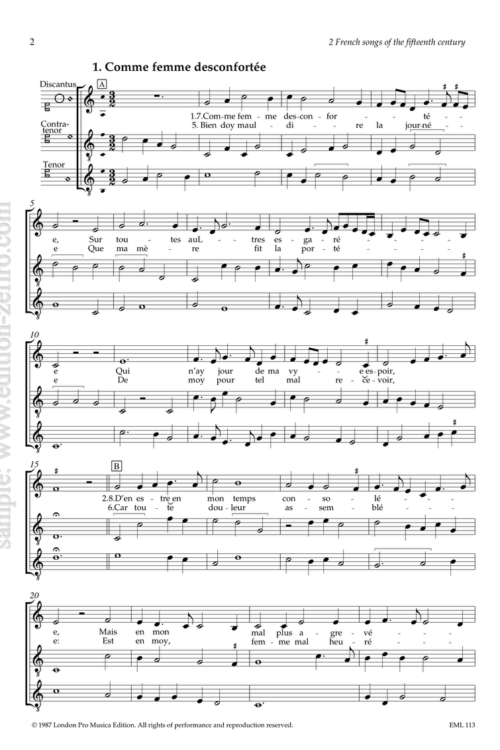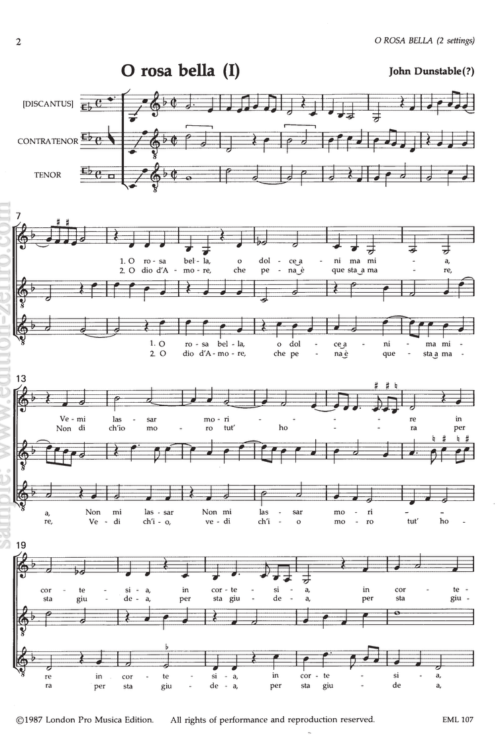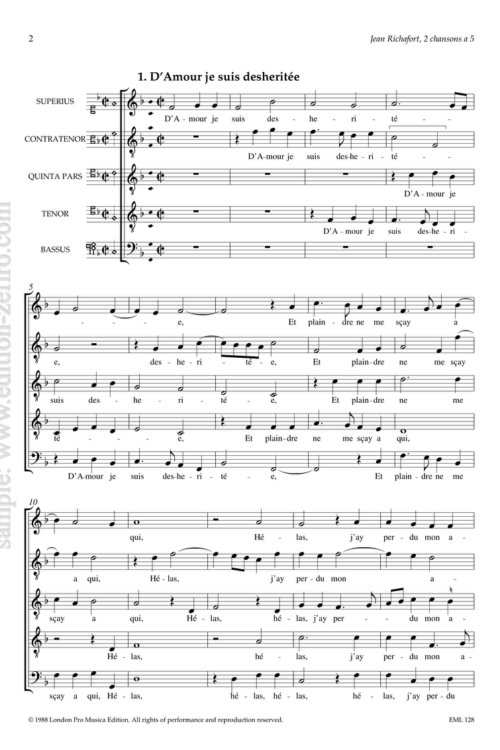This selection of German songs from the first half of the sixteenth century has been made with wind instruments in mind, and the pieces have been transposed down to fit crumhorns and other reed instruments. It is interesting that so little of the German tenor-song repertoire does actually fit on crumhorns (the present anthology is the result of a search through about three hundred pieces), and yet these and other wind instruments seem to have originated in Germany. It would seem that these frustratingly limited reed instruments must have been mixed with sackbuts and other more versatile instruments for much of the time.
The most important fact about these pieces is that they are nearly all tenor songs, and depend for their effect on having the tenor part either sung, or played on a contrasting instrument. There are three exceptions to this: no. 11, where if any one part should dominate it should be the discantus, no.17, where the melody is in the altus, and no.13, which is a double canon in which all parts use material from the given melody, but the lower pair more than the upper pair. Apart from these oddities, we are dealing with normal German songs in which the tenor is expected to dominate, even if it is newly-composed, and not a popular melody or a tenor from an older work.
When performing these pieces purely instrumentally, the scoring should be arranged with this fact in mind. If crumhorns are used for the remaining three parts, the tenor can be played on sackbut, dulcian, or pommer; another alternative is to use four crumhorns, and double the tenor an octave higher on a tenor recorder or flute. Generally speaking, the effect of the tenor ringing out can bring life to pieces that may well seem dull if performed on four equally-matched instruments. However, there is no evidence that such music was not played on normal consorts (similar works survive in tablature for four viols, for instance), and many pieces will work on consorts of recorders (ATTB, or TTTB): it is worth experimenting with the balance, as often the tenor part will ring out better if put on a second bass recorder.
In view of all this it is clear that in choosing a tempo for these pieces, one should look at the tenor, and find a speed at which that part makes melodic sense.
- Wohlauff, gut G’sell, von hinnen (Anonymous)
- Zu Regenspurg (Anonymous)
- Fur all ich krön (Anonymous)
- Nun ist es doch kein Reuter (Hans Teuglin)
- Ich schrei und rief (Anonymous)
- Cupido hat im jetzt erdacht (Anonymous)
- Mein Glück get auf der Setien aus (Anonymous)
- Mein’n Fleiss und Mueh (Ludwig Senfl)
- Die vollen Brüedren (Anonymous)
- Es wolt ein Fraw zum Weine gahn (Ludwig Senfl)
- Ein frölich Wesen (Jacob Obrecht)
- Verleih uns Frieden gnädiglich (Balthasar Resinarius)
- Es spricht der unweisen Mund wol (Balthasar Resinarius)
- Der Wnter Kalt (Caspar Othmayr)
- Mir ist ein schöns brauns Maidelein (Caspar Othmayr)
- Der Hundt (Anonymous)
- Die Brinlein die da fliessen (Balthasar Arthopius)
- Zu Lob so will ich Singen (Paul Kugelmann)
- An Dich Muss Stets Gedencken Ich (Jörge Wonhart)
- Nichts werders ist


